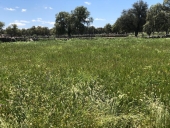

 9
9




Chasing that dream and enjoying every minute of it!
(Usually)
 7
7
















 4
4




Chasing that dream and enjoying every minute of it!
(Usually)
 5
5




 1
1




 4
4




Phil Stevens wrote:Hi John, and welcome. That's great info...i was completely unaware of the relationship between saprophytic and mycorrhizal fungi. It's also interesting to see the interplay between pasture and trees, and how the edge effect increases productivity. Have you thought about planting more trees into your open paddocks?
 2
2




John Stafford wrote:
Phil Stevens wrote:Hi John, and welcome. That's great info...i was completely unaware of the relationship between saprophytic and mycorrhizal fungi. It's also interesting to see the interplay between pasture and trees, and how the edge effect increases productivity. Have you thought about planting more trees into your open paddocks?
Hi Phil, yes spending hours on the tractor mowing grass provides ample time for contemplation. However for an elderly over ripe 85 year old, adding further trees to my 22ha property is beyond both my physical and financial capacity. Further more, although my Fendt 380GTA Tool Carrier with its front mounted twin rotor slasher is a breeze to drive over open paddocks, it is not much chop when trying to dodge numerous trees. This leaves me with herbaceous plants as the sole means of hosting mychorrhizal fungi (MF).
I note that successful advocates of regenerative farming consistently promote plant diversity as the core ingredient to their success without being able to explain why this is so. Could it be that it is biodiversity that guarantees at least some means of hosting MF. In my case a known host in Cats Ear (Hypochaeris) is a regular contributor to the diversity of my pastures. (This is my regular defence to neighbours who fail to appreciate my carpet of yellow flowers).

|
What's her name? You know. The fish girl. Ariel? She has a tiny ad.
The new gardening playing cards kickstarter is now live!
https://www.kickstarter.com/projects/paulwheaton/garden-cards
|


